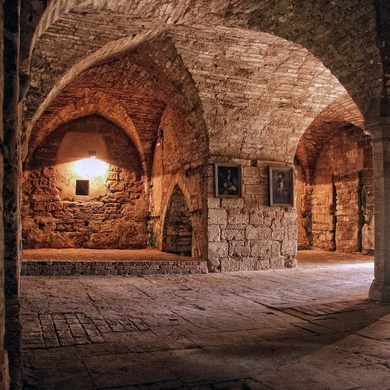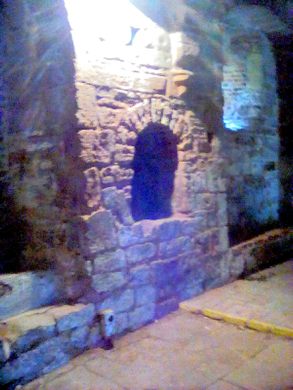Rufford Abbey
The undercroft is a spectacular example of medieval Cistercian architecture.
One of the best preserved examples of Cistercian architecture in the United Kingdom lies below the ruins of a 17th-century mansion. The building was originally a Cistercian monastery founded in 1146, and was one of the first institutions suppressed by Henry VIII ‘s dissolution of the monasteries.
The undercroft of the old abbey is exquisite. It somehow managed to survive hundreds of years in remarkable shape, despite the fact that much of the abbey was demolished when the building was converted into a country mansion by the 4th Earl of Shrewsbury.
Descending into the medieval basement gives visitors a glimpse of a past otherwise lost beneath a lavish mansion, as the house was further modified in the 18th and 19th centuries, becoming more and more opulent. A large lake was constructed on the estate, which was used to harvest ice during the winter. Ice was stored in five ice houses, two of which still stand today.
The surrounding parkland became a local jewel, and remains so to this day. Within the grounds is an old cedar tree, reputedly planted by King Charles II to commemorate his father, Charles I. The tree was cut off near the top in memory of Charles I’s execution, and every year it is trimmed back on the November 19, the birthday of the beheaded king.
After being used by the British Army during both World Wars, the house and estate were taken over by the Nottinghamshire County Council, which demolished parts of the building as it became unsafe due to dry rot.
Locals and tourists looking for a leisurely outing aren’t the only ones to visit this historic place. According to an information board near the ruins of the monastic building, several ghosts are said to haunt the abbey. One is a giant monk left over from the dissolution, and another is the “White Lady,” Lady Arbella Stuart who was once thought of as a potential heir to the throne after Elizabeth I and died as a prisoner in the Tower of London. The most disturbing ghost story is from the days when the house was still a residence. Several female visitors reported encountering a “clammy baby,” which they sensed trying to snuggle up to them while they were in bed. The story is said to relate to a child who was murdered in the house.
Know Before You Go
The park is open every day except Christmas Day, and visiting both the park and abbey is free. The car park is open from 8:30 a.m. to 5:30 p.m., though there's a fee of £3.50 between 9 a.m. and 4:30 p.m.
While exploring, look out for a wide range of modern sculpture and also the now-unroofed, remains of the orangery, which was converted to such use in the 19th century from a very rare 18th-century bathhouse. Remnants of its use as a bath house are still visible.
























Follow us on Twitter to get the latest on the world's hidden wonders.
Like us on Facebook to get the latest on the world's hidden wonders.
Follow us on Twitter Like us on Facebook